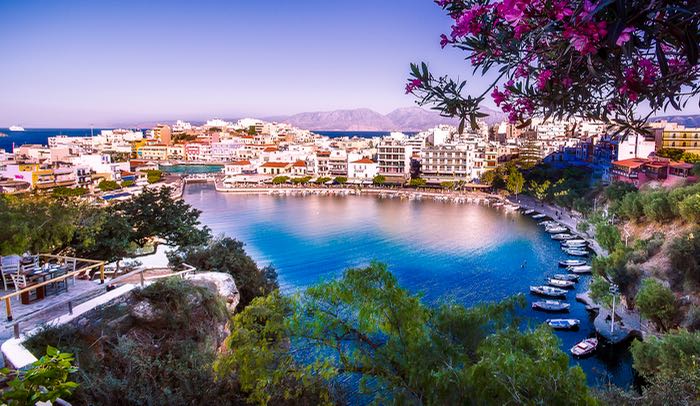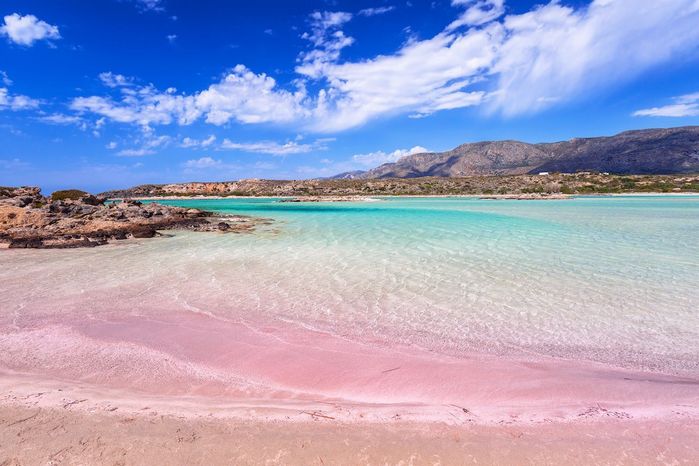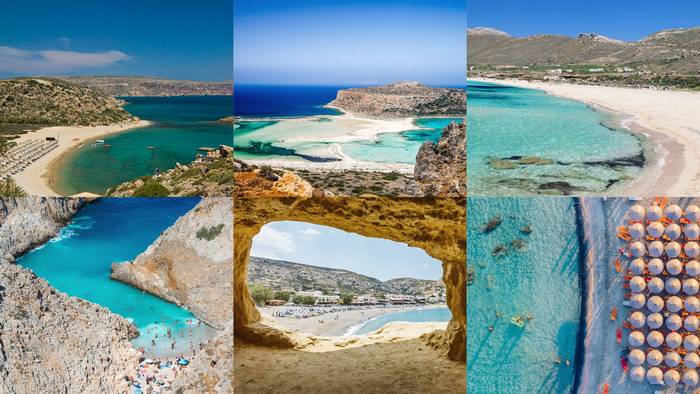An island of contradictions at the crossroads of 3 continents- Europe, Asia, and Africa- Crete is a distinctive island with a long history, deeply rooted traditions, a rich civilization, dramatic landscape, wonderful beaches, gentle climate, excellent tourist infrastructure, and opportunities for sport and entertainment.
It’s the largest island in Greece and the fifth largest in the Mediterranean lying in the south South Aegean region of Greece.
 It has several plateaux, caves, gorges, and dense woods. The island produces olives, oils, grapes, citrus fruits, aromatic and medicinal herbs. It has a mild climate with gentle winters and hot summers.
It has several plateaux, caves, gorges, and dense woods. The island produces olives, oils, grapes, citrus fruits, aromatic and medicinal herbs. It has a mild climate with gentle winters and hot summers.
Its crucial strategic position has been the cause of many wars on the island. Wars and occupations were not able to prevent the intellectual and artistic flourishing of the island.
We don’t refer to the marvelous achievements of the Minoan civilization, they were here during the time of peace, we are speaking about hundreds of years later when the Byzantine churches on Crete were built (14th century) when painting flourished, particularly the hagiography of the famous Cretan School (16th century), followed by the great Cretan painter Theotokopoulos, known as El Greco.

Among other island products, we should also mention folk arts and crafts, especially the weavings, embroideries, portable icons, ceramics, silver and gold accessories.
How to get there:
You can go to Crete by plane from Athens, Mykonos, Santorini, Rhodes, Karpathos, Kasos and Thessaloniki.
By ferry boat from Piraeus, the Cyclades, the Dodecanese, and Gytheio in the Peloponnese.
Must visit attractions in Crete:
1. Samaria Gorge
The Samaria gorge is the longest gorge in Europe. It’s 18km long and offers some spectacular landscape and scenery.
2. Knossos Minoan Palace
Knossos is considered the oldest European city. It was the center of the political and social life of the Minoan civilization. In 1450 BC an earthquake followed by the volcano eruption destroyed the palace.
3. Elafonissi
Also known as the Caribbean of the Mediterranean this is a must-see place for all beach lovers. Spend the day enjoying its clear waters and pink sand beach.
4. Spinalonga
Spinalonga is a small rocky island also known as the Leper Island. Now abandoned it attracts visitors who want to explore the ghost town.
5. Balos lagoon
This is one of the most photographed locations on the island. Shallow clear water and long sandy beaches are the synonyms of this spot. The lagoon also features a Venetian castle and a small uninhabited island of Gramvousa.
6. Heraklion Archaeological Museum
The museum is located in the center of Heraklion, the island’s capital. It houses an impressive collection of artifacts from Minoan civilization found all over Crete.
7. Crissokalitissa Monastery
Chrissokalitissa is an Orthodox monastery dating back from the 17th century. It’s located in the southwest of the island. It’s built on rocks 35m above sea level and overlooks the Lybian sea.
8. Agios Minas Cathedral
It’s located in Heraklion, the capital of Crete. It’s one of the biggest cathedrals in Crete dedicated to the patron saint of the island Saint Minas. The cathedral was completed in 1895 while Crete was still under Ottoman occupation.
9. Archaeological Museum of Chania
The museum houses artifacts, pottery, jewelry, and seals from the Minoan, Neolithic, and late Roman periods.
10. Heraklion Old Port
The biggest construction standing in the port is the Venetian fortress built in the 13th century. It’s also the symbol of the city.
 It has several plateaux, caves, gorges, and dense woods. The island produces olives, oils, grapes, citrus fruits, aromatic and medicinal herbs. It has a mild climate with gentle winters and hot summers.
It has several plateaux, caves, gorges, and dense woods. The island produces olives, oils, grapes, citrus fruits, aromatic and medicinal herbs. It has a mild climate with gentle winters and hot summers.
